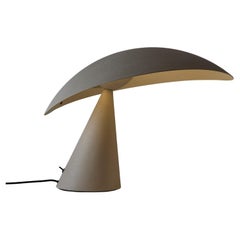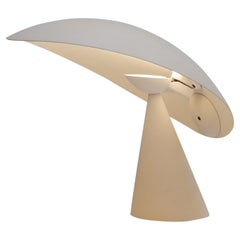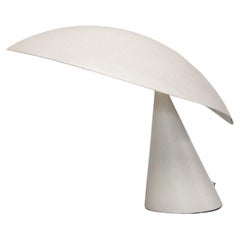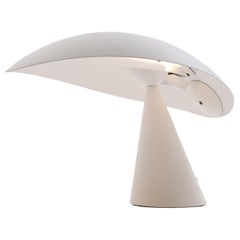Lavinia Table Lamp
20th Century Italian Modern Table Lamps
Aluminum
Vintage 1960s German Mid-Century Modern Table Lamps
Metal
Recent Sales
Vintage 1980s Italian Post-Modern Table Lamps
Aluminum
20th Century Italian Mid-Century Modern Table Lamps
Aluminum
Vintage 1980s German Space Age Table Lamps
Metal
Vintage 1960s Italian Table Lamps
Metal
Vintage 1980s Italian Post-Modern Table Lamps
Metal
Vintage 1980s Italian Mid-Century Modern Table Lamps
Aluminum
Vintage 1960s French Table Lamps
People Also Browsed
2010s American Flush Mount
Brass
21st Century and Contemporary Swedish Mid-Century Modern Table Lamps
Textile
21st Century and Contemporary Brazilian Modern Carts and Bar Carts
Steel
2010s American Modern Stools
Wood, Oak
21st Century and Contemporary American Mid-Century Modern Wall Lights an...
Brass, Enamel
Vintage 1960s Italian Armchairs
Fiberglass
Vintage 1960s Italian Mid-Century Modern Chandeliers and Pendants
Glass
20th Century French Mid-Century Modern Chairs
Steel
Vintage 1980s German Hollywood Regency Wall Mirrors
Crystal, Brass
Mid-20th Century Italian Mid-Century Modern Coffee and Cocktail Tables
Wood, Walnut, Burl
1990s Swedish Table Lamps
Stone
21st Century and Contemporary Indian Organic Modern Benches
Bronze
Vintage 1930s Danish Scandinavian Modern Lounge Chairs
Seagrass, Beech
Vintage 1970s German Mid-Century Modern Chandeliers and Pendants
Brass
Vintage 1960s German Mid-Century Modern Chandeliers and Pendants
Metal
20th Century Danish Mid-Century Modern Lounge Chairs
Leather, Wood
Finding the Right Table-lamps for You
Well-crafted antique and vintage table lamps do more than provide light; the right fixture-and-table combination can add a focal point or creative element to any interior.
Proper table lamps have long been used for lighting our most intimate spaces. Perfect for lighting your nightstand or reading nook, table lamps play an integral role in styling an inviting room. In the years before electricity, lamps used oil. Today, a rewired 19th-century vintage lamp can still provide a touch of elegance for a study.
After industrial milestones such as mass production took hold in the Victorian era, various design movements sought to bring craftsmanship and innovation back to this indispensable household item. Lighting designers affiliated with Art Deco, which originated in the glamorous roaring ’20s, sought to celebrate modern life by fusing modern metals with dark woods and dazzling colors in the fixtures of the era. The geometric shapes and gilded details of vintage Art Deco table lamps provide an air of luxury and sophistication that never goes out of style.
After launching in 1934, Anglepoise lamps soon became a favorite among modernist architects and designers, who interpreted the fixture as “a machine for lighting,” just as Le Corbusier had reimagined the house as “a machine for living in.” The popular task light owed to a collaboration between a vehicle-suspension engineer by the name of George Carwardine and a West Midlands springs manufacturer, Herbert Terry & Sons.
Some mid-century modern table lamps, particularly those created by the likes of Joe Colombo and the legendary lighting artisans at Fontana Arte, bear all the provocative hallmarks associated with Space Age design. Sculptural and versatile, the Louis Poulsen table lamps of that period were revolutionary for their time and still seem innovative today.
If you are looking for something more contemporary, industrial table lamps are demonstrative of a newly chic style that isn’t afraid to pay homage to the past. They look particularly at home in any rustic loft space amid exposed brick and steel beams.
Before you buy a desk lamp or table lamp for your living room, consider your lighting needs. The Snoopy lamp, designed in 1967, or any other “banker’s lamp” (shorthand for the Emeralite desk lamps patented by H.G. McFaddin and Company), provides light at a downward angle that is perfect for writing, while the Fontana table lamp and the beloved Grasshopper lamp by Greta Magnusson-Grossman each yield a soft and even glow. Some table lamps require lampshades to be bought separately.
Whether it’s a classic antique Tiffany table lamp, a Murano glass table lamp or even a bold avant-garde fixture custom-made by a contemporary design firm, the right table lamp can completely transform a room. Find the right one for you on 1stDibs.
Read More
These Designer Light Fixtures Are Total Scene Stealers
Across New York, there’s no shortage of statement lighting on view.
My Father Was Obsessed with This French Art Deco Tiger Lamp
The 1920s design is a thrilling combination of saturated colors, ancient motifs and modern aesthetics.
Hans Bergström’s Monumental Chandeliers Are Made for Grand Spaces
Designed by a giant of Swedish lighting, the large-scale fixtures bring major drama.
This Paavo Tynell Chandelier Is a Radiant Bouquet
The alluring pendant light exemplifies the designer’s winsome mid-career work.
Ettore Sottsass Captures a Shooting Star in This Rare 1970s Floor Lamp
Before founding the Memphis Group, Sottsass bent the rules of lighting design with the wonderfully wavy Cometa.
You Don’t Need a Fictional Fairy to Get This Real Pinocchio Lamp
Warm chalet style meets cool Bauhaus functionality in Pietro Cascella’s cleverly carved creation.
Why Is Italy Such a Hotbed of Cool Design?
Patrizio Chiarparini of Brooklyn’s Duplex gallery sheds light on the lasting legacy of Italy’s postwar furniture boom.
With a High-Tech Flagship and Cool Collabs, Lladró Is Breaking the Mold for Porcelain Production
Thanks to its new leadership, the Spanish maker of figurines, busts and lighting is on a mission to update the art of porcelain for the 21st century.



